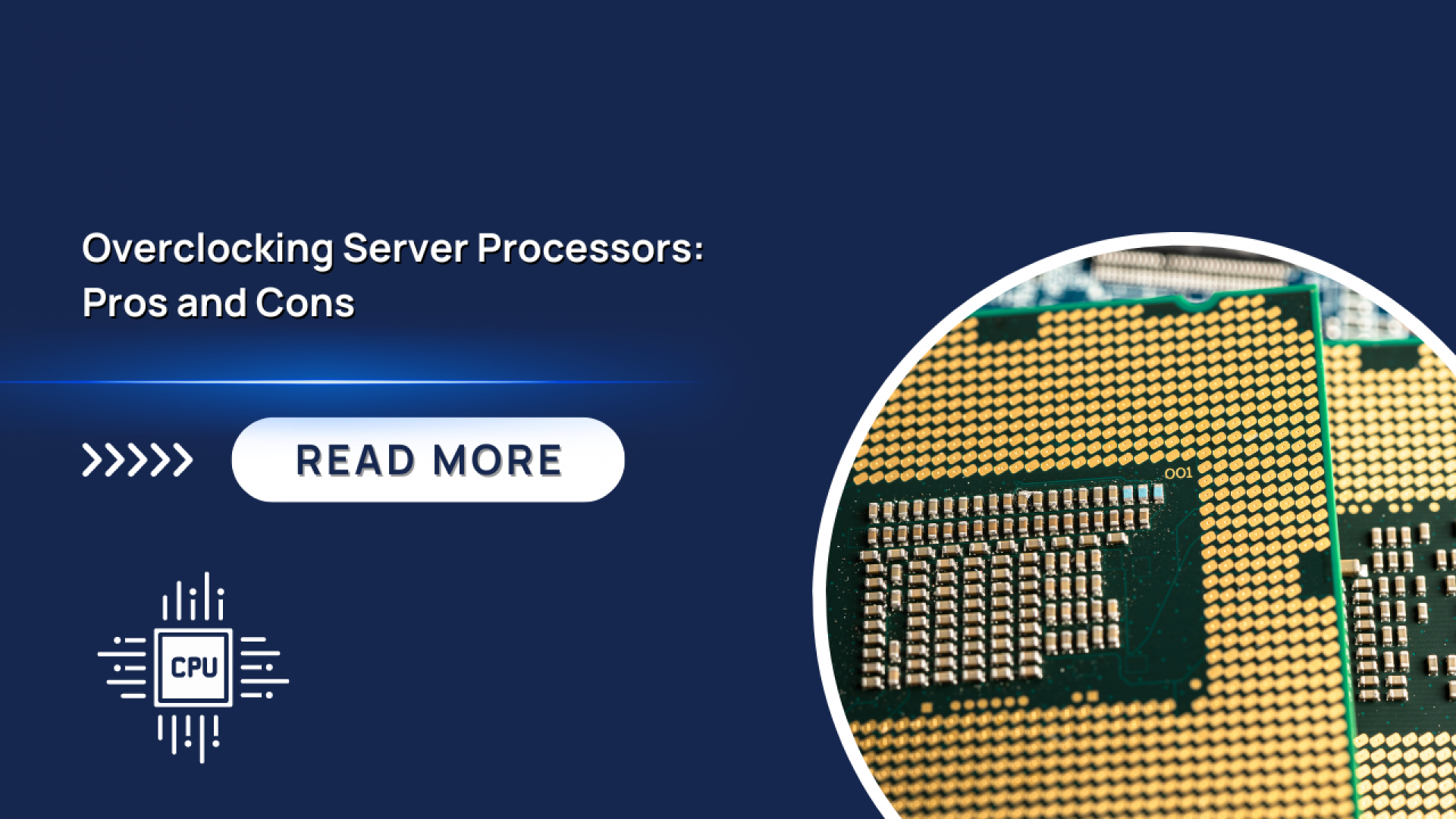
Server processors serve as the backbone of data centers, efficiently managing substantial workloads with precision and speed. Recently, the practice of overclocking, traditionally associated with gaming enthusiasts, has entered the domain of server processors. Although overclocking presents potential advantages, it introduces a nuanced set of pros and cons that demand thoughtful evaluation from IT professionals and data center managers.
Overclocking can yield increased processing power, offering a cost-effective means to extend hardware life and tailor performance to specific workloads. However, the trade-offs include heightened reliability concerns, as overclocking may compromise system stability, potentially leading to crashes or hardware failures. Issues such as increased heat generation, voided warranties, and elevated power consumption further underscore the need for cautious consideration when contemplating overclocking in the critical environment of data centers.
Comprint offers a server with seamless performance so that critical steps like overclocking need not be a concern.
Understanding Overclocking
Overclocking entails operating a processor at a frequency beyond its stock clock rate, boosting performance by executing more instructions per second. Despite potential performance gains, the practice carries inherent risks, especially when applied to server processors. The unique considerations in server environments demand careful evaluation, as overclocking may compromise stability and introduce reliability issues that are critical for sustaining continuous operations in data centers.
Pros of Overclocking Server Processors
Increased Performance:
Overclocking can lead to a notable boost in processing power. This is particularly appealing for tasks that demand high computational capabilities, such as scientific simulations, rendering, and certain types of data analysis. The additional clock cycles per second can significantly reduce the time required for these processes.
Cost-Efficiency:
Overclocking allows data centers to extract more performance from existing hardware without immediately investing in new, more powerful processors. This can be a cost-effective way to extend the life of server hardware and delay the need for upgrades.
Customization for Workloads:
Different workloads have varying processing requirements. Overclocking enables IT professionals to fine-tune server performance based on the specific needs of their applications. This customization can lead to optimized performance for certain tasks.
Competitive Edge:
In highly competitive industries where processing speed directly translates to a competitive edge, overclocking can be a strategic move. Industries like high-frequency trading or real-time analytics, where milliseconds matter, might benefit from the enhanced speed.
Cons of Overclocking Server Processors
Reliability and Stability Issues:
Overclocking can compromise the stability and reliability of server systems. Pushing processors beyond their designed limits may result in system crashes, data corruption, or even hardware failures. In a server environment, where uptime is critical, sacrificing stability for performance gains can be a risky trade-off.
Increased Heat Generation:
Overclocking invariably increases the heat generated by processors. This poses a significant challenge in server environments where maintaining optimal operating temperatures is crucial. Excessive heat can lead to thermal throttling, reducing the processor's speed to prevent overheating, and potentially negating the benefits of overclocking.
Voided Warranties:
Overclocking typically voids the warranty provided by the processor manufacturer. This means that if any issues arise, the manufacturer may refuse to provide support or replace faulty hardware. For organizations heavily reliant on manufacturer support, this is a considerable drawback.
Power Consumption:
Overclocked processors generally consume more power than their stock counterparts. In data centers with a focus on energy efficiency, the increased power consumption can result in higher operational costs and may necessitate additional investments in cooling infrastructure.
Best Practices for Overclocking Server Processors
For those willing to explore overclocking in a server environment, it's crucial to adhere to best practices to mitigate risks and maximize benefits:
Thorough Testing:
Rigorous testing is imperative before deploying overclocked processors in a production environment. This includes stability tests, performance benchmarks, and assessments of the impact on power consumption and heat generation.
Robust Cooling Solutions:
Overclocking increases heat output, necessitating enhanced cooling solutions. Investing in advanced cooling systems, such as liquid cooling, can help maintain optimal operating temperatures and reduce the risk of thermal-related issues.
Monitoring and Management:
Implement comprehensive monitoring tools to keep a constant eye on processor temperatures, voltages, and system stability. Automated management systems can adjust clock speeds dynamically based on system load, ensuring a balance between performance and safety.
Backup and Redundancy:
Given the increased risk of system instability, maintaining robust backup and redundancy systems becomes even more critical. In the event of a failure, having failover mechanisms in place can minimize downtime and protect data integrity.
Conclusion
Overclocking server processors introduces a tantalizing prospect of unlocking additional performance, but it's a practice that demands careful consideration. The decision to overclock should be based on the specific needs of the organization, the criticality of system stability, and the willingness to accept potential drawbacks.
In scenarios where performance is paramount, and the risks can be mitigated through thorough testing and monitoring, overclocking might offer a strategic advantage. However, for environments where reliability, stability, and long-term hardware support are non-negotiable, sticking to the manufacturer's specifications becomes the safer and more prudent choice.
Ultimately, the decision to overclock server processors should be made with a clear understanding of the organization's priorities, a thorough risk assessment, and a commitment to maintaining the delicate balance between performance and reliability in the dynamic landscape of server environments.

Leave a Comment